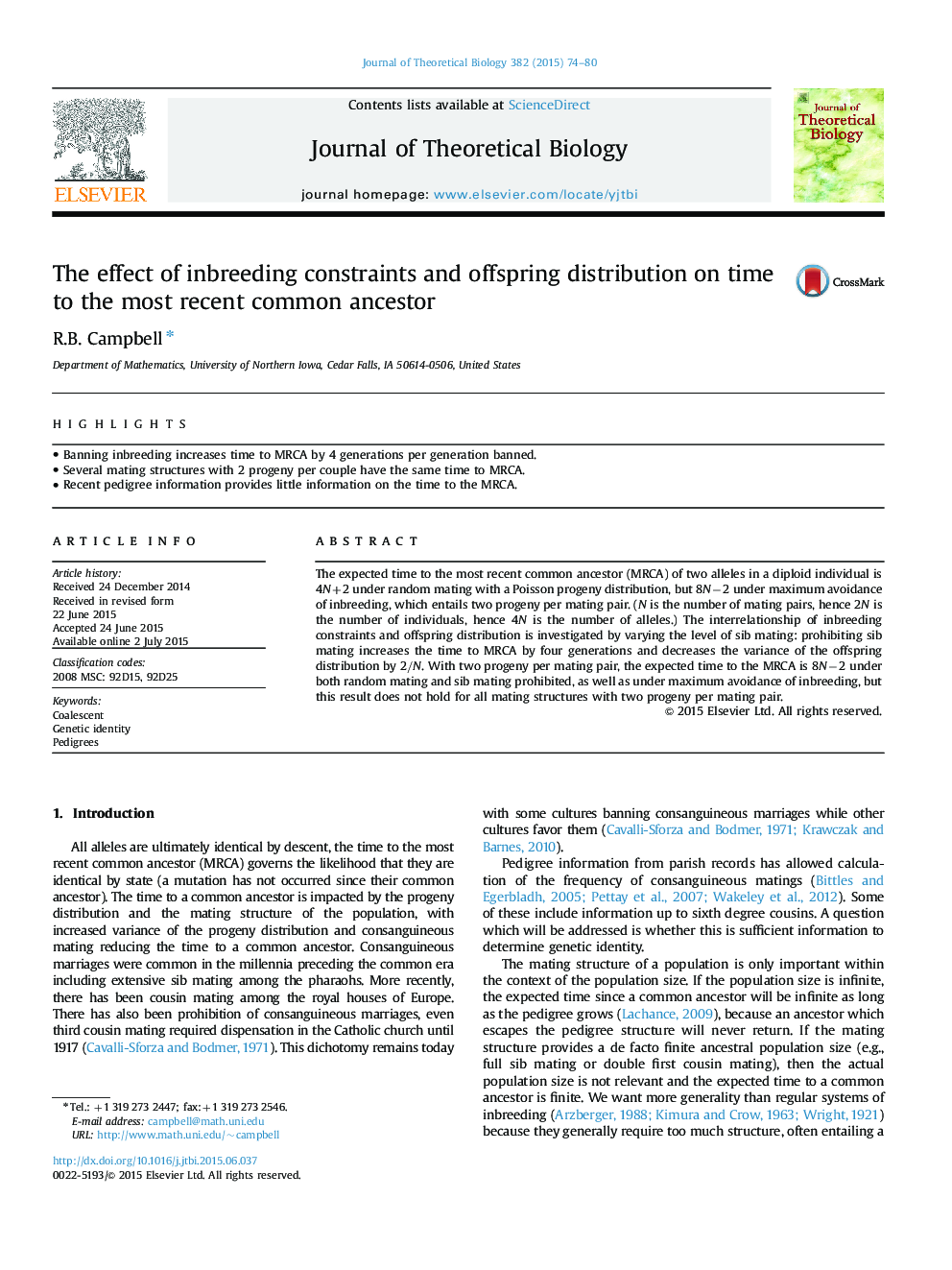| Article ID | Journal | Published Year | Pages | File Type |
|---|---|---|---|---|
| 6369514 | Journal of Theoretical Biology | 2015 | 7 Pages |
â¢Banning inbreeding increases time to MRCA by 4 generations per generation banned.â¢Several mating structures with 2 progeny per couple have the same time to MRCA.â¢Recent pedigree information provides little information on the time to the MRCA.
The expected time to the most recent common ancestor (MRCA) of two alleles in a diploid individual is 4N+2 under random mating with a Poisson progeny distribution, but 8Nâ2 under maximum avoidance of inbreeding, which entails two progeny per mating pair. (N is the number of mating pairs, hence 2N is the number of individuals, hence 4N is the number of alleles.) The interrelationship of inbreeding constraints and offspring distribution is investigated by varying the level of sib mating: prohibiting sib mating increases the time to MRCA by four generations and decreases the variance of the offspring distribution by 2/N. With two progeny per mating pair, the expected time to the MRCA is 8Nâ2 under both random mating and sib mating prohibited, as well as under maximum avoidance of inbreeding, but this result does not hold for all mating structures with two progeny per mating pair.
